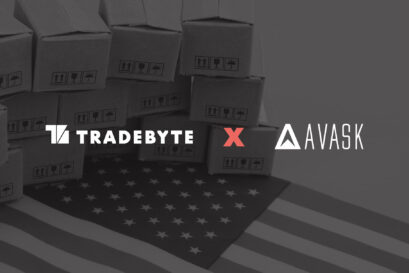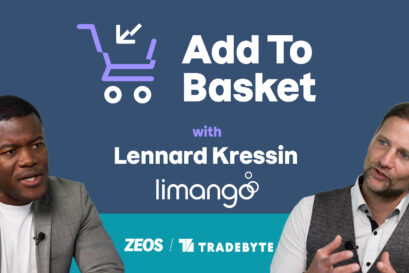E-commerce marketplace integration: the essential guide for brands
Unlock global growth with e-commerce marketplace integration. Learn how to simplify expansion and overcome challenges with this essential guide for brands.

Shoppers today don’t just visit one website; they browse, compare, and buy across multiple online marketplaces. For brands, this means presence on a single site is no longer enough; success demands a seamless, multichannel strategy that meets customers wherever they shop.
But managing this complexity isn’t easy. Each marketplace operates with its own rules, from inventory updates and pricing controls to customer service expectations and revenue requirements. Manually juggling these can lead to costly errors, lost sales and operational problems.
Marketplace integration offers a powerful solution: by linking your internal systems directly to these platforms, you can automate workflows, ensure data accuracy, and respond quickly to market demands. This not only saves time and reduces risk but also unlocks scalable growth and broader market reach.
This guide covers the key steps that every brand should take before integrating with marketplaces. Whether you are launching for the first time or refining your existing setup, you will gain practical insights to help you streamline your approach and maximise your results.

What is an e-commerce marketplace?
An e-commerce marketplace is an online platform where third-party sellers can list and sell products to customers. Unlike a traditional online store owned by a single retailer, a marketplace hosts multiple sellers in one place. The platform operator manages the infrastructure, while sellers handle pricing and inventory.
Marketplaces make it easier for customers to compare options across different sellers and browse various product categories in one location. For brands, they offer benefits like access to large, established customer bases, built-in traffic, and robust infrastructure.
Well-known examples of e-commerce marketplaces include Amazon, eBay, Zalando, and ASOS.
What is marketplace integration?
Marketplace integration is the strategic process of connecting a brand’s internal operational systems with external online marketplaces. This includes but is not limited to aspects like product listings, inventory management and order processing.
The main goal of marketplace integration is to enable seamless, bidirectional data exchange and establish centralised control over various aspects of the brand’s presence across multiple sales channels. Without it, brands must manually update listings, manage inventory, and handle admin tasks, which wastes valuable time.
Benefits of marketplace integration for e-commerce brands
As e-commerce marketplaces continue to attract millions of engaged shoppers daily, integrating with these powerful platforms offers major advantages for brands aiming to scale and thrive in the digital landscape.
Here are some of the key benefits:
-
1. Expanded reach and customer acquisition
Marketplace integration offers brands a powerful shortcut to millions of potential customers on platforms like ASOS and Zalando. This direct access delivers immediate reach, reducing the time and cost of generating traffic on your own.
Imagine a brand currently attracting 10,000 visitors to its own website each month. By strategically listing products on high-traffic marketplaces, that brand could effortlessly reach hundreds of thousands, if not millions, more shoppers. This significantly boosts brand visibility and directly translates into increased sales.
-
2. Streamlined operations and efficiency
Automating key functions like inventory updates and order management through marketplace integration significantly reduces manual work and prevents costly errors, including shipping delays.
This efficiency lets your team focus on strategic, high-value tasks like marketing, merchandising, and customer service. This operational streamlining is crucial for achieving scalable growth without the need for a proportional increase in staff.
-
3. Diversified sales and risk reduction
Relying on a single channel is risky. Algorithm changes, policy updates, or technical issues can impact performance. Diversifying across multiple channels ensures revenue stability and expands access to new customer segments and markets.
-
4. Data-driven decision making
Centralised data from marketplaces provides comprehensive insights into sales, customer behaviour, and return rates. This information supports smarter decisions on pricing, stock management, and marketing, improving profitability.
-
5. Scalability and international growth
Marketplace integration simplifies global expansion by acting as a central hub for adding new platforms and regions with ease. While many marketplaces support international audiences, integration tools manage language, currency, and pricing differences, automating translations and conversions.
Middleware software streamlines operations by connecting internal systems with external marketplaces, automating the exchange of product data and orders. This seamless integration enables brands to scale from local to global markets without added complexity.
Key considerations for brands before integration
Expanding into online marketplaces offers significant growth opportunities, but success depends on a well-defined strategy. Before moving forward, it’s important to ensure your approach aligns with your brand, product offerings, and business objectives.
Defining your marketplace strategy
Before integrating into e-commerce marketplaces, it’s crucial to develop a clear plan aligned with your brand’s objectives. Identify which marketplaces suit your product type, target audience, and regional focus.
For example, a sportswear brand might benefit more from integrating with a sports-focused marketplace like Decathlon, rather than a marketplace that covers all aspects of clothing. Or, a brand with a presence in Germany that is looking to expand into Belgium and the Netherlands might consider integrating with a marketplace that focuses specifically on the Benelux region, such as Bol. Each marketplace attracts a specific buyer demographic, so understanding which fits your audience is essential.
Next, review each platform’s fee structures, commission models, and onboarding requirements, as these vary and impact your pricing strategy. Some platforms also have content, compliance, or service standards that must be met.
Finally, define your goals clearly. Whether you aim to generate additional revenue, increase brand awareness, or explore international markets, setting measurable KPIs from the start will help guide your efforts and track progress.
Reviewing your current infrastructure
A successful e-commerce marketplace integration relies on the robustness of your existing infrastructure. Begin by evaluating if your ERP, PIM, or WMS can support multichannel sales. Middleware solutions like Tradebyte provide pre-built connectors that integrate seamlessly with these systems, acting as a bridge to multiple marketplaces.
Equally important is the quality of your product data. Many marketplaces demand specific formats, such as sizing and imagery. Inconsistent data can delay launches or cause inaccuracies.
We streamline this by standardising and validating your product data to meet platform requirements before publication.
Addressing potential challenges
While expanding into new marketplaces unlocks major benefits, it also introduces operational challenges that demand strategic solutions. One major challenge is data mapping, accurately translating and formatting product information to meet each marketplace’s unique requirements. This isn’t a “one size fits all” scenario, as every platform has its own data requirements.
Furthermore, managing customer service across multiple platforms presents another considerable challenge. Each marketplace often has distinct policies, service level agreements, and customer expectations, making it difficult to maintain consistent and high-quality support. E-commerce is constantly evolving, and staying on top of marketplace regulations can be challenging. Continuous monitoring is essential to ensure compliance and avoid penalties.
Tradebyte is here to tackle these operational burdens, allowing brands to expand seamlessly.
Tradebyte: Your strategic partner for smooth marketplace integration
E-commerce marketplace integration demands more than just technology. It requires flexibility, specialised expertise, and continuous support. That’s exactly where Tradebyte steps in as your trusted partner.
Our TB.One software is a powerful, all-in-one solution created specifically for brands aiming to scale through fashion and lifestyle marketplaces. Imagine managing every aspect of your marketplace operations – from initial integrations and real-time pricing adjustments to precise stock control – all from a single, intuitive dashboard. This centralised approach allows you to optimise operations across all your chosen marketplaces with unparalleled efficiency. Simply import your product data once into TB.One, and effortlessly distribute it across our extensive network of over 90 marketplaces.
Beyond our software, we provide a full range of professional services designed to simplify marketplace management and support your expansion every step of the way. Whether you’re tackling complex technical integrations, addressing product data quality challenges, launching your first marketplace campaign, or scaling into new markets, our experienced experts are here to guide you.
Ready to achieve scalable, efficient, and sustainable marketplace integration? Book a discovery call with us today and explore how Tradebyte can help you grow.


